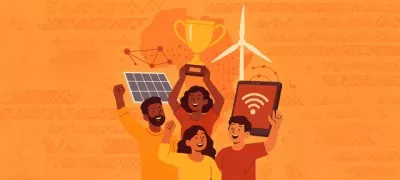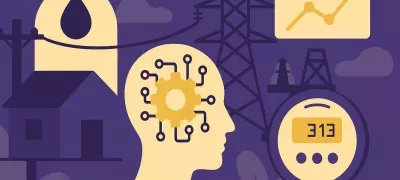Roseau Technologies is a company specialising in technical software created in 2018 for the electricity distribution sector: modelling, simulation, optimisation, supervision and control software for distribution networks, and services related to this software. A spin-off from Grenoble University, Roseau Technologies maintains close links with the research ecosystem. The Grenoble-based company won the Digital Energy 2022 challenge, in partnership with the Comoros National Electricity Company. This partnership will enable Sonelec to map the electricity network on the islands of Grande Comore and Anjouan, and to develop a digital twin, particularly for investment planning. Find out more about this project on our website here.
Visit the Roseau Technologies website / Contact Louise Muller
What is a network model and what function does it fulfil?
Louise Muller: This expression refers to a fairly wide range of applications offering a more or less complete digital image of the network. Mapping Information Systems (GIS) can be considered as a first form of modelling. However, cartographic data cannot be used in its current state to feed electrical simulation software. To do this, an electrical model must also describe the physical characteristics of each of the network elements and the way in which they are connected to each other. In addition, a load model is required, i.e. a description of the power injected and consumed by the various users. When this information is gathered and ordered, it becomes possible to simulate the electrical state of the network, i.e. to determine the value of the voltage at any point and the current flowing through the conductors. This ensures that the voltage level is sufficient to guarantee a good quality of supply to all users, and that the current level does not cause excessive heating that could damage or destroy the cables and transformers.
This type of calculation, known as "load flow", is central to network sizing. It is used to regularly check that existing networks are still adapted to needs, to assess which sections need to be reinforced where necessary, and to design the new networks needed to integrate new users and new renewable energy production plants. It's an essential tool for maximising the impact of investments made!
What are the requirements for developing these models? For example, do you need a GIS?
Louise Muller : The existence of a GIS is generally a first step. Some open source data can also be useful, but for a complex model, technical data obtained in the field remains essential - even if certain gaps can be compensated for by the modeller's know-how. This is a crucial point: the quality of GIS data is rarely sufficient to produce an electrical model, and a great deal of processing is required to check the completeness of the data, reconstruct electrical connectivity, etc. This is why Roseau Technologies has developed software entirely dedicated to this task: Roseau-ETL.
What's more, in addition to developing network models, rigorous organisation is required to keep them up to date, for example by integrating the work carried out into the database as and when required.
What is Roseau Technologies' experience in Africa? How do you see the specific potential of this technology for the African continent?
Louise Muller: Roseau Technologies is currently working with SONELEC in the Comoros. This is currently our only African project, but this conclusive experience has encouraged us to look ahead to other opportunities on the continent. However, we need to bear in mind the wide disparities in the levels of technical maturity of the continent's energy providers.
Compared with European systems, there is a dynamic in Africa linked to energy access policies: 300 million Africans should be connected by 2030. These policies are leading to network extension projects and the integration of new means of production, particularly renewable energy. In this context, the need for modelling and simulation tools is particularly obvious.
Lastly, Africa can now benefit from feedback from operators who are more advanced in terms of digitisation, in particular by acquiring the most appropriate tools from the outset. For example, some network modelling software is effective for complex studies, but not very handy for day-to-day studies. They also require considerable expertise to use. Roseau Technologies' more accessible solutions can complement these more complex tools and deliver efficiency gains for day-to-day operations.
What technological developments are taking place in the network model market?
Louise Muller: What we're seeing today is the democratisation of network models. New, simpler and more user-friendly software is being added to the range of traditional solutions, which cover a very broad functional spectrum but are still reserved for the most highly qualified users. At the same time, software distributed as SaaS is gradually becoming the norm.
What's new at Roseau Technologies?
Louise Muller: Roseau Technologies is expanding its offering! We already provide electrical modelling and simulation solutions to distribution organising authorities and renewable energy project developers. We are currently preparing an offering for network operators, in particular to speed up the processing of connection requests, for which the queues are now getting longer.

Louise Muller




